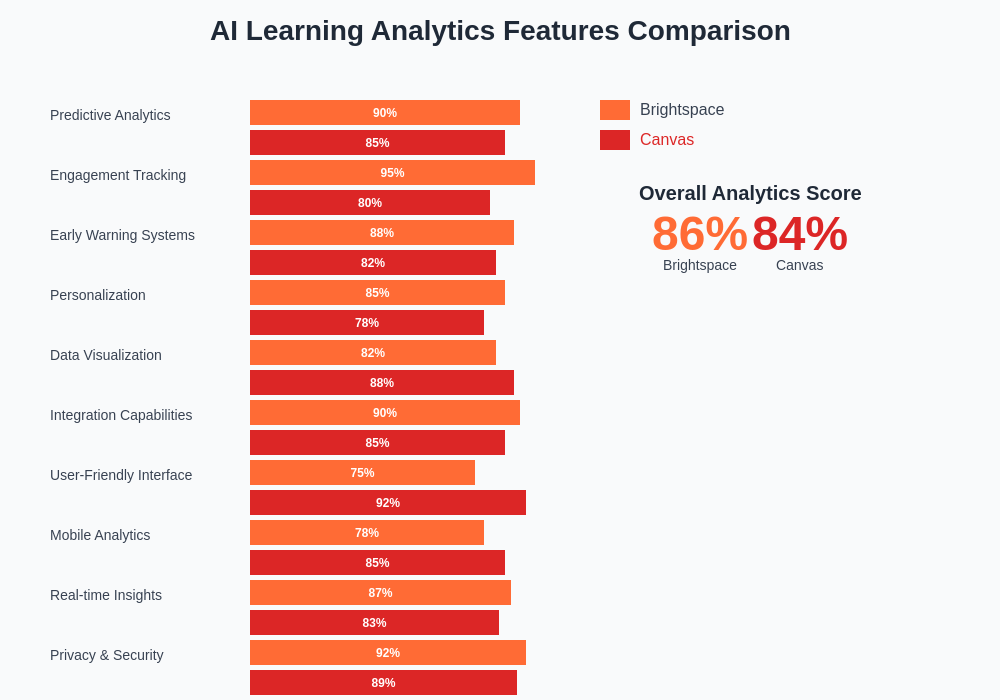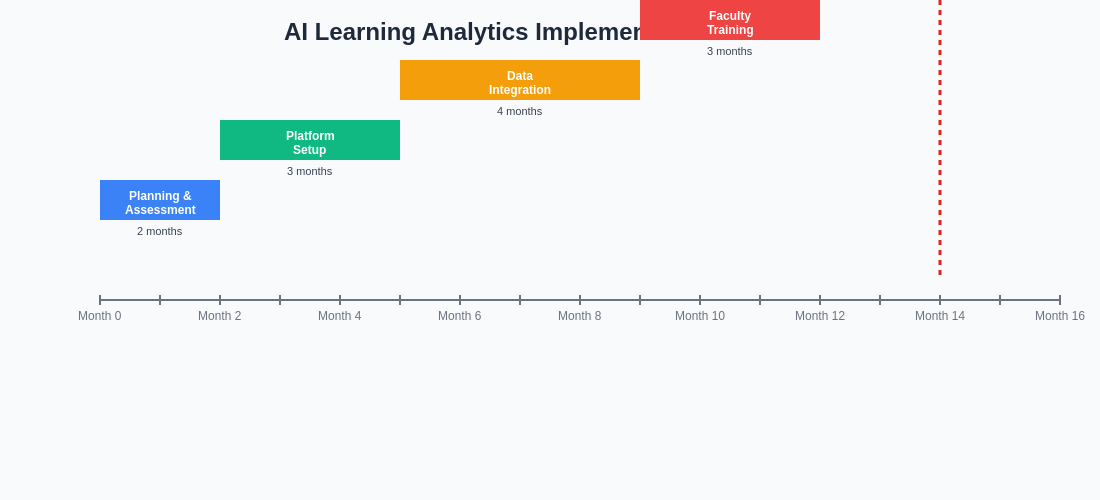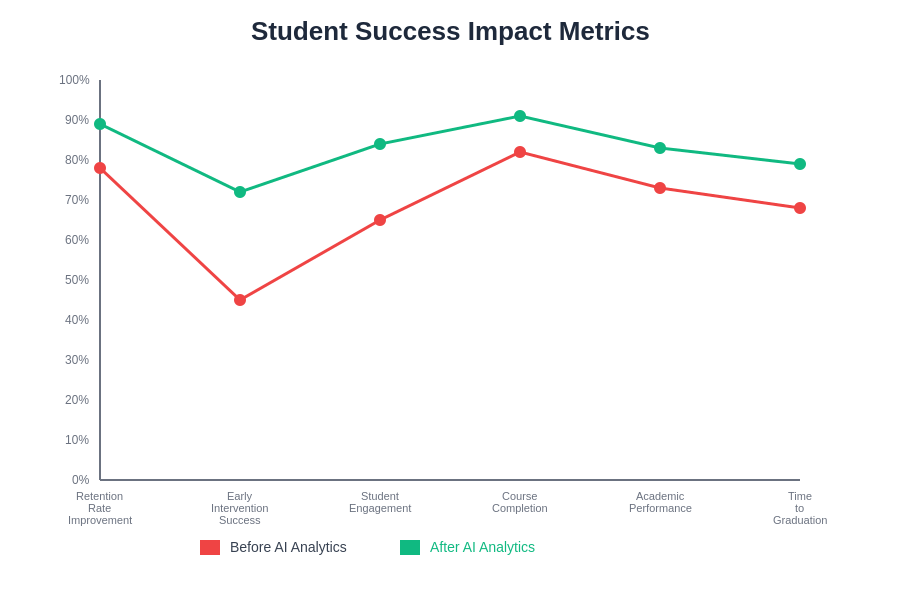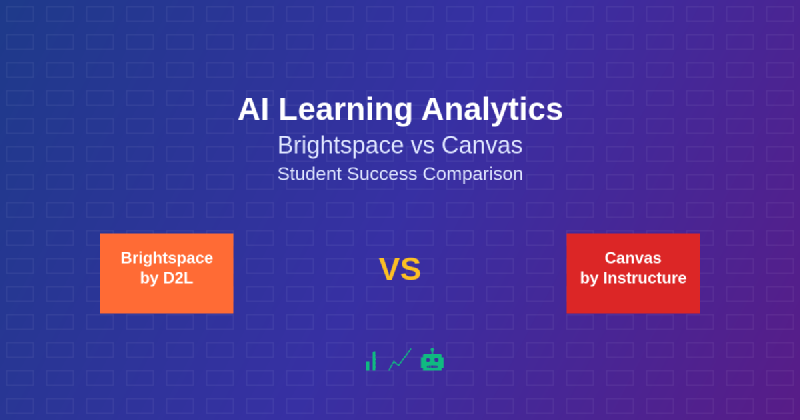The integration of artificial intelligence into learning management systems has fundamentally transformed how educational institutions approach student success and academic performance monitoring. Two leading platforms, Brightspace by D2L and Canvas by Instructure, have emerged as frontrunners in implementing sophisticated AI-powered learning analytics that provide unprecedented insights into student behavior, engagement patterns, and learning outcomes. This comprehensive analysis explores how these platforms leverage artificial intelligence to enhance educational experiences and support student achievement through data-driven decision making.
Explore the latest AI educational trends to understand how cutting-edge technologies are reshaping learning environments and academic institutions worldwide. The evolution of learning analytics represents a paradigm shift from traditional assessment methods to predictive, personalized, and proactive educational support systems that can identify at-risk students before they fall behind and provide targeted interventions to improve learning outcomes.
Understanding AI Learning Analytics in Educational Contexts
AI learning analytics encompasses the systematic collection, analysis, and interpretation of student data to improve learning processes, predict academic outcomes, and optimize educational interventions. These sophisticated systems utilize machine learning algorithms, natural language processing, and predictive modeling to transform raw educational data into actionable insights that benefit students, instructors, and administrators alike. The implementation of AI analytics in learning management systems has created opportunities for personalized learning experiences that adapt to individual student needs while providing educators with comprehensive tools for monitoring and supporting student progress.
The fundamental principle underlying AI learning analytics involves the continuous collection of learner interaction data, including login patterns, assignment submission behaviors, discussion forum participation, quiz performance, and content engagement metrics. This data is then processed through advanced algorithms that can identify patterns, predict future performance, and recommend specific interventions or learning paths that align with individual student requirements and institutional objectives.
Brightspace AI Learning Analytics Architecture
Brightspace has developed a comprehensive AI analytics framework that centers around their Brightspace Insights platform, which leverages machine learning algorithms to provide predictive analytics and actionable recommendations for student success. The platform’s AI capabilities are built upon a robust data infrastructure that captures granular student interaction data across all learning activities, creating a comprehensive picture of student engagement and academic progress that extends far beyond traditional grade-based assessments.
The Brightspace analytics engine utilizes sophisticated pattern recognition algorithms to identify early warning indicators of academic difficulty, including decreased engagement levels, irregular submission patterns, and declining performance trends. These predictive models are continuously refined through machine learning processes that incorporate historical student data, current performance metrics, and institutional-specific variables to create increasingly accurate forecasts of student outcomes.
Enhance your educational technology with Claude’s advanced AI capabilities for comprehensive analysis and decision-making support that complements traditional learning management systems. The integration of multiple AI tools creates a powerful ecosystem for educational innovation and student support that can adapt to diverse institutional needs and learning environments.
Canvas AI Learning Analytics Framework
Canvas has implemented AI learning analytics through their Canvas Analytics suite, which combines real-time data processing with predictive modeling to support student success initiatives. The platform’s approach emphasizes accessibility and usability, providing educators with intuitive dashboards and visualizations that translate complex data patterns into understandable insights that can inform immediate pedagogical decisions and long-term curriculum planning.
The Canvas AI system employs natural language processing to analyze student communications, discussion forum posts, and assignment submissions to gauge engagement quality and identify students who may be struggling with course content or experiencing motivational challenges. This comprehensive approach to data analysis extends beyond quantitative metrics to include qualitative assessments of student interaction and communication patterns that provide deeper insights into learning processes.
Canvas Analytics utilizes ensemble machine learning methods that combine multiple predictive models to create robust forecasts of student performance, dropout risk, and optimal intervention timing. The platform’s AI algorithms continuously learn from new data inputs and user feedback, improving prediction accuracy and recommendation relevance over time while maintaining student privacy and data security standards.
Comparative Analysis of Predictive Modeling Capabilities
The predictive modeling capabilities of both Brightspace and Canvas represent significant advances in educational technology, though each platform employs distinct approaches to forecasting student outcomes and identifying intervention opportunities. Brightspace’s predictive models focus heavily on engagement pattern analysis, utilizing sophisticated algorithms that can detect subtle changes in student behavior that may indicate academic difficulty or disengagement before traditional assessment methods would reveal such issues.
Brightspace’s AI system excels in creating comprehensive student risk profiles that incorporate multiple data sources, including learning object interactions, time-on-task metrics, social learning indicators, and historical performance patterns. These multifaceted analyses enable the platform to provide highly personalized recommendations for both students and instructors, suggesting specific learning resources, study strategies, or support services that align with individual needs and learning preferences.
Canvas approaches predictive modeling with an emphasis on simplicity and actionability, developing algorithms that prioritize clear, interpretable results over complex statistical models. This philosophy ensures that educators can easily understand and act upon AI-generated insights without requiring extensive data science expertise, democratizing access to advanced analytics capabilities across diverse educational contexts and technical skill levels.
Student Engagement Monitoring and Analysis
Both platforms have developed sophisticated systems for monitoring and analyzing student engagement, though their methodologies and presentation of insights differ significantly. Brightspace employs comprehensive engagement tracking that captures detailed interaction data across all learning activities, creating granular profiles of student behavior that can reveal patterns invisible to traditional observation methods.
The Brightspace engagement analytics system utilizes advanced clustering algorithms to identify student engagement archetypes, grouping learners based on interaction patterns, learning preferences, and performance characteristics. This segmentation enables personalized intervention strategies that address specific engagement challenges and leverage individual learning strengths to optimize educational outcomes.
Canvas focuses on real-time engagement monitoring that provides immediate feedback to both students and instructors about participation levels, assignment progress, and collaborative learning activities. The platform’s AI algorithms analyze engagement data to identify optimal timing for interventions and suggest specific strategies for re-engaging students who show signs of decreased participation or motivation.
Performance Prediction and Early Warning Systems
The early warning capabilities of both platforms represent critical tools for preventing student failure and supporting timely interventions that can significantly impact academic outcomes. Brightspace has developed predictive models that can identify at-risk students weeks or even months before traditional indicators would suggest academic difficulty, enabling proactive support measures that address issues before they become insurmountable challenges.
Brightspace’s early warning system incorporates machine learning algorithms that analyze historical data patterns from thousands of students to identify subtle behavioral indicators that precede academic difficulties. These predictive models consider factors such as login frequency patterns, assignment submission timing, peer interaction levels, and content engagement depth to create comprehensive risk assessments that inform targeted intervention strategies.
Canvas implements early warning systems that emphasize accessibility and immediate actionability, providing clear visual indicators and straightforward recommendations that enable rapid response to student needs. The platform’s AI algorithms focus on identifying students who deviate from established success patterns while providing specific guidance on effective intervention strategies based on successful outcomes from similar situations.
Discover comprehensive AI research capabilities with Perplexity to enhance your understanding of learning analytics methodologies and best practices for educational technology implementation. The integration of multiple AI research tools provides educators and administrators with comprehensive resources for optimizing learning analytics initiatives and maximizing student success outcomes.
Personalization and Adaptive Learning Integration
The personalization capabilities of both platforms demonstrate how AI learning analytics can create truly individualized educational experiences that adapt to unique learner needs and preferences. Brightspace has developed adaptive learning pathways that utilize AI algorithms to continuously adjust content presentation, difficulty levels, and learning sequences based on individual student performance and engagement patterns.
Brightspace’s personalization engine employs reinforcement learning techniques that optimize learning experiences through continuous feedback loops, adjusting recommendations and content delivery based on student responses and performance outcomes. This dynamic approach ensures that learning experiences evolve with student needs while maintaining alignment with curriculum objectives and institutional standards.
Canvas implements personalization through intelligent content recommendations and adaptive assessment strategies that respond to individual learning progress and mastery levels. The platform’s AI algorithms analyze student interaction patterns to suggest optimal learning resources, study strategies, and assessment approaches that align with individual learning preferences and academic goals.

The comprehensive comparison of AI learning analytics features reveals distinct strengths and approaches between Brightspace and Canvas platforms. While both systems offer robust analytics capabilities, their implementations differ significantly in areas such as user interface design, predictive modeling sophistication, and integration complexity, providing institutions with different value propositions based on their specific needs and technical capabilities.
Data Visualization and Reporting Capabilities
The presentation and visualization of learning analytics data significantly impacts the usability and effectiveness of AI-powered insights for educators and administrators. Brightspace provides comprehensive dashboard systems that transform complex data patterns into intuitive visualizations that support informed decision-making at individual, course, and institutional levels.
Brightspace dashboards utilize interactive data visualization techniques that enable users to explore student data from multiple perspectives, drilling down into specific metrics or expanding views to identify broader trends and patterns. The platform’s visualization tools are designed to accommodate diverse user needs, from individual instructors monitoring single courses to administrators analyzing institution-wide performance trends.
Canvas emphasizes simplicity and clarity in data presentation, providing streamlined dashboards that highlight key insights and actionable recommendations without overwhelming users with excessive detail or complexity. The platform’s visualization approach prioritizes immediate understanding and rapid response capabilities, enabling educators to quickly identify issues and implement appropriate interventions.
Integration with Institutional Systems and Workflows
The effectiveness of AI learning analytics depends heavily on seamless integration with existing institutional systems and educational workflows. Brightspace has developed extensive integration capabilities that connect with student information systems, library databases, financial aid platforms, and other institutional technologies to create comprehensive views of student experiences and support services.
Brightspace’s integration architecture utilizes APIs and data synchronization protocols that ensure real-time data sharing across institutional systems while maintaining data security and privacy standards. This comprehensive integration enables holistic student support approaches that consider academic, financial, social, and personal factors that influence educational outcomes.
Canvas provides flexible integration options that accommodate diverse institutional technology ecosystems while maintaining user-friendly implementation processes. The platform’s integration capabilities focus on essential data connections that support core analytics functions without requiring extensive technical expertise or resources for implementation and maintenance.
Privacy, Security, and Ethical Considerations
The implementation of AI learning analytics raises important questions about student privacy, data security, and ethical use of educational data that both platforms address through comprehensive policies and technical safeguards. Brightspace has implemented robust data protection measures that comply with international privacy regulations while providing transparent information about data collection, use, and sharing practices.
Brightspace’s approach to privacy emphasizes student agency and control over personal data, providing options for students to understand how their data is used and to make informed decisions about participation in analytics programs. The platform implements advanced encryption and access control measures that protect sensitive student information while enabling beneficial analytics applications.
Canvas addresses privacy and security through comprehensive data governance frameworks that balance analytics benefits with student rights and institutional responsibilities. The platform provides clear policies regarding data use, implements technical safeguards against unauthorized access, and offers tools for institutional compliance with applicable privacy regulations and ethical guidelines.
Implementation Strategies and Best Practices
Successful implementation of AI learning analytics requires careful planning, stakeholder engagement, and ongoing evaluation of outcomes and effectiveness. Brightspace provides comprehensive implementation support that includes training programs, change management resources, and ongoing technical assistance to ensure successful adoption and utilization of analytics capabilities.
Effective implementation strategies for Brightspace analytics typically involve phased rollouts that begin with pilot programs in select courses or departments, allowing institutions to develop expertise and refine processes before expanding to broader implementations. This approach enables organizations to address challenges and optimize workflows while building confidence and competency among faculty and staff.

The structured approach to AI learning analytics implementation requires careful planning and systematic execution across multiple phases. This timeline demonstrates the critical milestones and dependencies involved in successfully deploying comprehensive analytics solutions while ensuring stakeholder buy-in, technical integration, and sustainable adoption across institutional systems and processes.
Canvas implementation strategies emphasize simplicity and rapid adoption, providing straightforward setup processes and immediate value demonstrations that encourage faculty engagement and utilization. The platform’s approach focuses on delivering quick wins and visible benefits that build momentum for broader analytics adoption and integration into institutional practices.
Measuring Return on Investment and Effectiveness
The evaluation of AI learning analytics effectiveness requires comprehensive assessment of both quantitative outcomes and qualitative benefits that extend beyond traditional metrics. Brightspace analytics implementations typically demonstrate measurable improvements in student retention rates, course completion percentages, and overall academic performance that provide clear evidence of return on investment for institutional analytics initiatives.

The quantitative evidence for AI learning analytics effectiveness demonstrates substantial improvements across critical student success indicators. These metrics illustrate the transformative impact of intelligent analytics systems on educational outcomes, showing consistent gains in retention, engagement, and academic performance when institutions implement comprehensive AI-powered learning analytics solutions.
Brightspace’s impact measurement approaches include sophisticated statistical analyses that control for external factors and isolate the specific contributions of analytics interventions to improved student outcomes. These rigorous evaluation methods provide compelling evidence for the value of AI learning analytics while identifying areas for continued improvement and optimization.
Canvas effectiveness measurement focuses on practical outcomes and user satisfaction metrics that demonstrate immediate value and long-term benefits of analytics implementations. The platform provides tools for tracking key performance indicators and measuring progress toward institutional goals while maintaining focus on usability and adoption rates among faculty and staff.
Future Developments and Emerging Trends
The evolution of AI learning analytics continues to accelerate with advances in machine learning, natural language processing, and educational research that promise even more sophisticated and effective tools for supporting student success. Brightspace is investing heavily in research and development initiatives that explore emerging technologies such as deep learning, sentiment analysis, and predictive modeling techniques that could revolutionize educational analytics capabilities.
Future developments in Brightspace analytics may include advanced natural language processing for analyzing student writing and communication, computer vision applications for assessing engagement in video-based learning, and sophisticated recommendation engines that provide highly personalized learning experiences based on comprehensive student profiles and preferences.
Canvas is focusing on accessibility and democratization of advanced analytics capabilities, developing tools that make sophisticated AI insights available to educators regardless of technical expertise or institutional resources. The platform’s future development priorities include enhanced mobile analytics capabilities, improved integration with emerging educational technologies, and simplified interfaces that maximize usability while maintaining analytical power.
The convergence of AI learning analytics with other emerging technologies such as virtual reality, augmented reality, and immersive learning environments promises to create unprecedented opportunities for understanding and optimizing educational experiences. Both platforms are exploring these intersections to develop next-generation analytics capabilities that can support increasingly sophisticated and personalized educational approaches.
Institutional Decision-Making and Platform Selection
The choice between Brightspace and Canvas for AI learning analytics implementation depends on numerous factors including institutional size, technical resources, faculty expertise, student populations, and strategic priorities. Brightspace may be optimal for institutions that prioritize comprehensive analytics capabilities, have significant technical resources, and seek maximum customization and integration possibilities for their learning analytics initiatives.
Canvas may be more suitable for institutions that value simplicity, rapid implementation, and broad faculty adoption over maximum analytical sophistication. The platform’s emphasis on usability and accessibility makes it particularly attractive for organizations with limited technical resources or those seeking to quickly realize benefits from learning analytics implementations.
The decision-making process should include careful evaluation of institutional needs, technical capabilities, budget considerations, and long-term strategic objectives to ensure optimal alignment between platform capabilities and organizational requirements. Both platforms offer significant value for supporting student success through AI learning analytics, though their different approaches and strengths may align differently with specific institutional contexts and priorities.
Disclaimer
This article is for informational purposes only and does not constitute professional advice regarding educational technology selection or implementation. The views expressed are based on current understanding of AI learning analytics platforms and their capabilities. Educational institutions should conduct thorough evaluations, pilot testing, and stakeholder consultations before making platform selection decisions. The effectiveness of learning analytics may vary depending on institutional context, implementation approaches, and user adoption levels.
